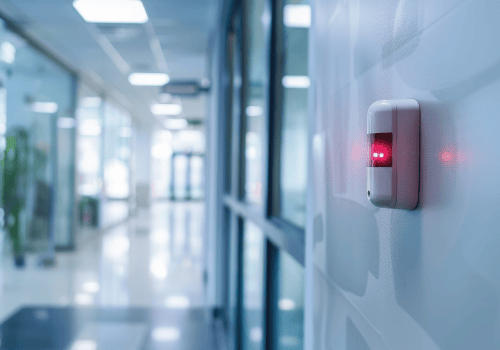There is a wide range of smart building sensors available nowadays, offering extensive information on how they can benefit your building in terms of temperature regulation, humidity detection, electrical current monitoring, and more. A sensor interface is a comprehensive term for any type of sensor installed in your building to assist with such monitoring.
What is the Difference Between Sensors and Smart Sensors?
What is the Difference Between Sensors and Smart Sensors?
Smart sensors include an embedded Digital Motion Processor, a microprocessor integrated into the sensor that allows it to perform onboard processing of sensor data. This provides actionable insights directly from the sensor itself. In contrast, a standard sensor does not include this microprocessor, requiring external processing units that take up space and incur additional costs.
How are Smart Sensors Helping the Environment?
How are Smart Sensors Helping the Environment?
As the call for environmental consciousness prompts businesses to reassess their operations for sustainability, smart sensors offer a practical and intelligent solution to reduce their carbon footprint. By implementing smart sensors, businesses can gather real-time information and respond to pattern fluctuations, thereby reducing overall energy consumption.
Types of Sensor
Humidity Sensor
Humidity sensors allow you to maintain ideal conditions and act immediately if change occurs. They are used to maintain heating, ventilation, and air conditioning systems in areas that are sensitive to moisture. Take the Enocean temperature humidity sensor for example: this smart device is compatible with smart homes and buildings and checks the humidity of the room every 100 seconds, without needing a battery to operate.
Temperature Sensor
Temperature is a highly useful metric to measure in a workplace. If you’re working, for example, in an industrial or computing setting with machinery, a lot of this equipment has to operate within tolerances that account for heat and if a space does not adhere to these parameters, this can affect the performance and longevity of certain equipment. A sensor like the Enocean temperature sensor will help to understand these patterns and allow you to adapt your environment as and when it needs.
Light Sensor
Light sensors are great for optimising lighting conditions and conserving energy. They are widely used in various applications, such as automated lighting systems, to adjust the illumination based on the ambient light levels. For instance, the Milesight WS202 wireless light sensor is a versatile device, measuring light with a range of up to 15 km in rural areas and 2 km in urban areas and able to tell when an indoor space is being used or not. With a 4-year+ battery life, this sensor significantly reduces wasted energy lost to unnecessary lighting.
Motion Sensor
Motion sensor interfaces play a crucial role in enhancing security and automating systems. They are commonly used in security systems to detect movement and trigger alarms or notifications, as well as in smart lighting systems to turn lights on or off based on occupancy. Consider the SR MOW Solar wireless wall motion sensor - it detects motion within its range and operates without batteries or wires, making it an efficient and reliable solution for maintaining security and optimising energy use. Along with this, there are also door and window sensors that track an opening or closing event for a heightened sense of security.
By integrating a variety of sensor interfaces, we can ensure ideal conditions, enhance security, and significantly reduce energy consumption. Smart sensors offer an advanced level of functionality by processing data on-site, providing actionable insights that help in real-time decision-making. As businesses and individuals become more environmentally conscious, the deployment of these smart sensors presents a practical and efficient solution to reduce carbon footprints and promote sustainability. Embracing these technologies not only improves operational efficiency, it contributes to a greener, more intelligent future.











